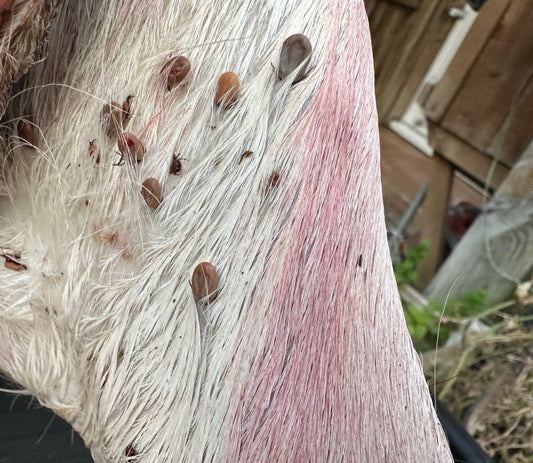At Wildscape Deer Management, we understand how critical it is to demonstrate effective deer control strategies if you’re applying for higher-tier Countryside Stewardship (CS) grants. As we move through 2025, deer impact assessments have become a central requirement. These assessments allow landowners and managers to prove that deer populations are being monitored and managed in a way that preserves woodland health—an increasingly important factor in meeting government funding standards.
Government programmes such as the England Woodland Creation Offer (EWCO) and higher-tier CS grants place heavy emphasis on protecting new and regenerating woodlands from over-browsing. Whether you’re planting new saplings or managing established woods, unchecked deer populations can compromise woodland ecology by damaging young trees and understory plants. Without clear evidence that deer densities and their impacts are under control, grant applications risk being turned down.
Why Deer Impact Assessments Matter
Deer impact assessments help landowners identify the specific browsing pressures on their woodlands. By gathering data on deer species, population densities, and the extent of habitat damage, you create a baseline that informs all subsequent management decisions. Higher-tier CS grants often require detailed documentation of browsing levels, highlighting any signs of bark stripping, leaf damage, or reduced regeneration rates. This evidence can then be used to demonstrate how your deer management plan will mitigate or resolve those issues.
Key Steps in Conducting an Assessment
- Field Surveys: Observing deer activity, collecting evidence of browsing, and noting which tree or plant species are most affected.
- Baseline Data Collection: Estimating deer densities and identifying focal areas of concern, such as regenerating stands or newly planted sections.
Gathering and recording reliable data in these areas allows you to provide grant assessors with a clear, evidence-based snapshot of current conditions, as well as your planned interventions.
Beyond simply satisfying grant requirements, deer impact assessments also guide practical, on-the-ground management. By pinpointing the worst-hit sections of woodland, landowners can target resources—such as fencing or culling schedules—where they will have the most benefit. Ongoing assessments can then confirm whether these measures are improving woodland health, or whether strategies need to be adjusted.
At Wildscape Deer Management, we conduct detailed surveys that look at both the deer population and the wider habitat. Our impact assessments include mapping out vulnerable areas, quantifying browsing damage, and helping you set realistic targets for controlling deer densities. By analysing this data, we can advise on solutions—like scheduled culls, temporary protective fencing, or more strategic planting choices—that align with the standards set by the Forestry Commission and higher-tier CS funding bodies.
Integrating Impact Assessments into CS Applications
When applying for higher-tier CS grants, it’s important to show that your deer control measures directly address the issues identified in your impact assessments. If your data reveals that browsing is a significant barrier to natural regeneration in a particular section of woodland, funding bodies will expect your application to outline the targeted steps you plan to take. These might include carefully defined cull levels, new planting schemes designed to spread browsing pressure, or increased monitoring efforts during critical growing seasons. By making the link between data and action clear, you can strengthen your case for receiving grant support.
In some cases, deer impact assessments also highlight positive indicators, such as well-established understory layers or tree species that appear resilient to browsing. Sharing these findings with grant assessors shows that your land management strategy isn’t just reactive, but also proactive in nurturing biodiversity and woodland health.
Preparing Your Woodland for Ongoing Success
Deer impact assessments are more than a one-time exercise. As conditions shift—whether through seasonal changes, population fluctuations, or evolving forestry practices—periodic reassessments ensure your deer management remains aligned with grant requirements and ecological needs. This ongoing approach allows you to update your actions promptly if deer numbers rise in a particular area or if evidence of over-browsing resurfaces.
To meet 2025’s tighter grant standards, landowners who can consistently demonstrate evidence-based deer control stand a better chance of securing higher-tier CS funding. By integrating impact assessments into everyday woodland management, you create a stronger, more resilient environment for wildlife, prevent costly replanting efforts, and build a compelling case for long-term support.
How Wildscape Deer Management Can Help
Our team offers a full suite of services designed to streamline this process:
- Deer Impact Assessments: Site visits and detailed reports indicating current deer pressures and the state of woodland habitats.
- Bespoke Management Plans: Tailored strategies that translate assessment data into practical culling schedules, fencing decisions, and habitat improvements, all aligned with CS grant requirements.
- Monitoring and Training: Ongoing guidance to ensure that deer control measures remain effective and compliant with the latest regulations.
By working with us, you gain a partner that combines direct field expertise with an up-to-date understanding of grant funding criteria. This means we can help you focus on what really matters: creating healthier woodlands, meeting conservation goals, and demonstrating to grant bodies that your approach is both sustainable and responsible.
If you’re preparing an application for higher-tier CS grants or simply want to make sure your deer control is up to current standards, reach out to us at Wildscape Deer Management. We’ll help you integrate deer impact assessments into an effective, adaptable plan that safeguards your woodland’s future while meeting the evolving demands of 2025 and beyond.






